When going to Galicia in Spain, you should definitely visit Santiago de Compostela. This city is the capital of this Spanish region and one of the best-known Catholic pilgrimage sites in the world.


Santiago de Compostela has a huge historical value, with its historic centre having been declared a World Heritage Site by UNESCO.

There are plenty of reasons to visit Santiago de Compostela, so I am here to share with you what you can visit there, the best restaurants and also some accommodation options.
How many days do you need to visit Santiago de Compostela?
Despite being a relatively small city, Santiago de Compostela has several points of interest that deserve our attention.
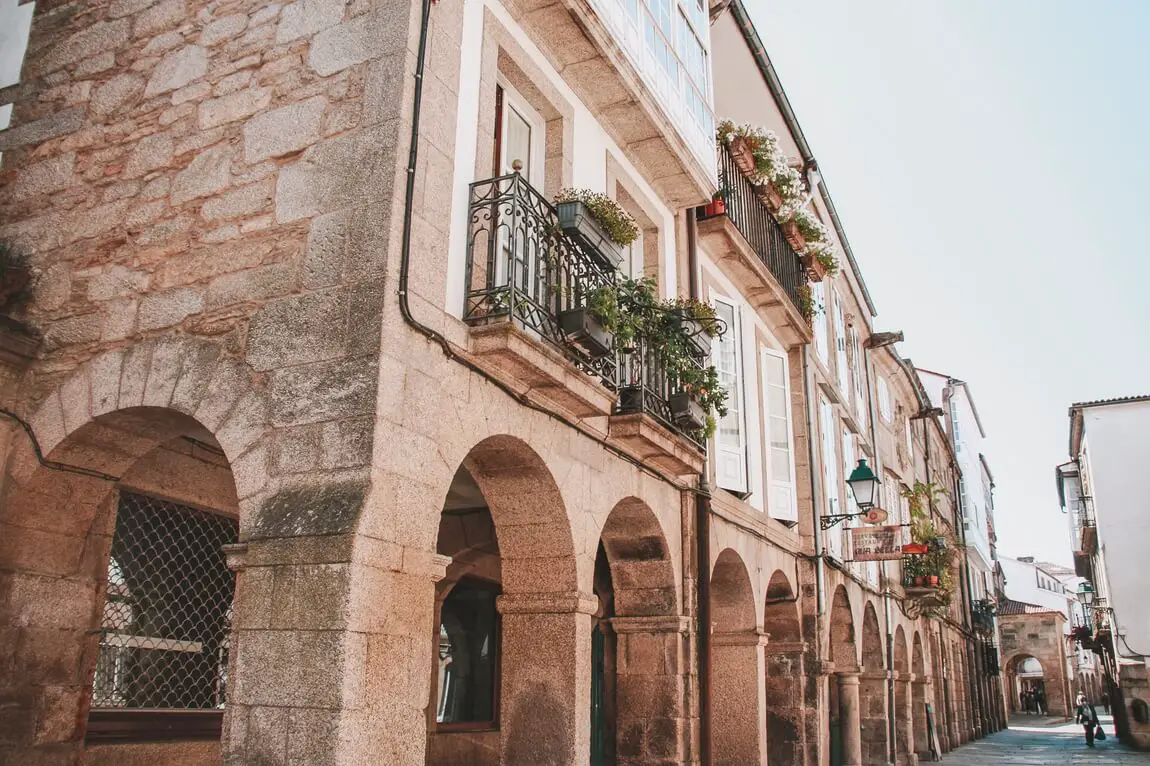
It all depends a bit on your travel style and the time you usually like to spend in each place 😉 However, one to two days is more than enough to get to know the city quite well. This itinerary can be followed in only one day, but if you have two days available, it’ll enable you to explore the city at a slower pace.
What is the best time of year to visit Santiago de Compostela?
Although Galicia is known for its unpredictable weather, any time of year is a good time to visit Santiago de Compostela. Of course, in summer, the temperatures will certainly be more pleasant and the probability of rainfall much lower.
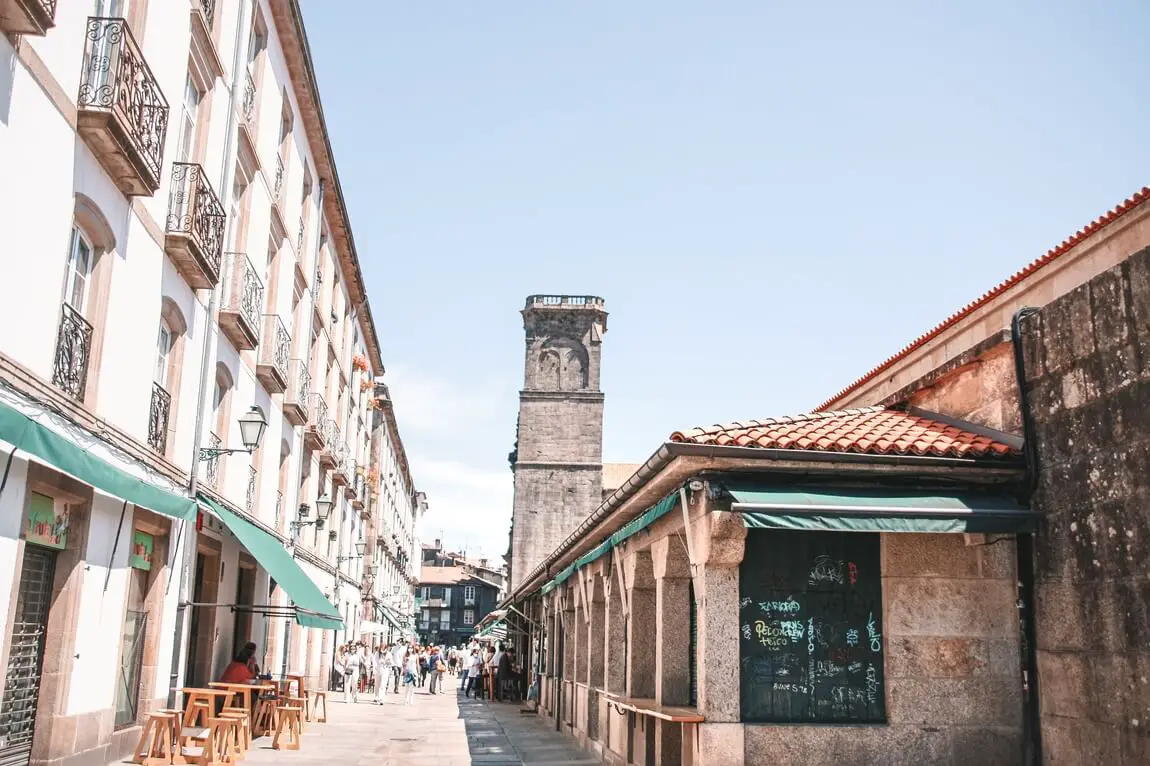
However, the most popular months for pilgrims are from March to June and September to December, as it rains less and is also less hot.
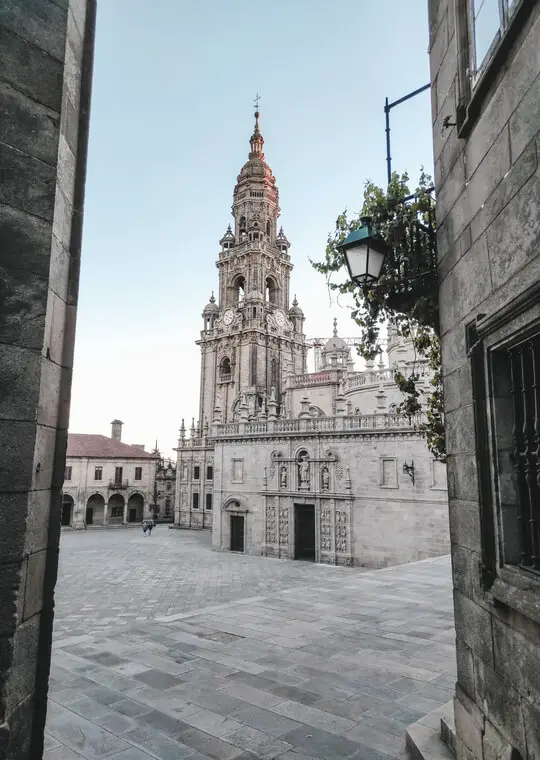
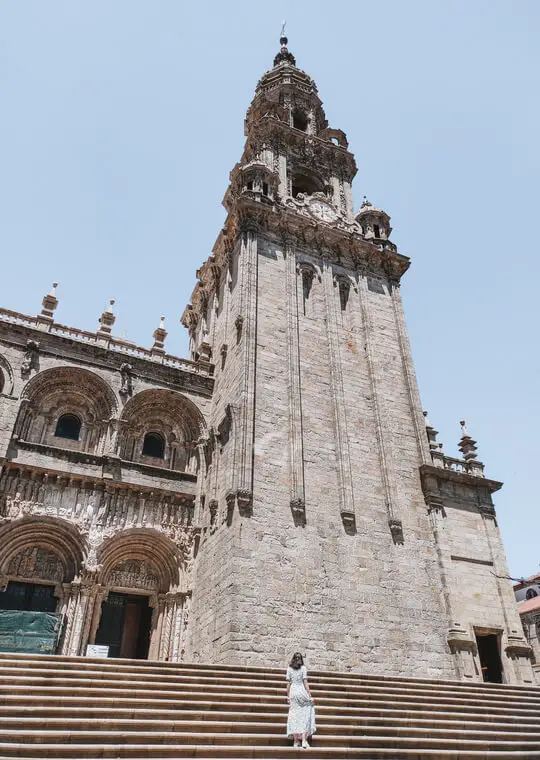
In addition, another time of year with a lot of tourists in the city is July. Especially around the 25th of July, as this is the day of Santiago de Compostela’s patron saint. Additionally, when 25 July happens on a Sunday, they celebrate the Jubilee Year, making these years even more special.
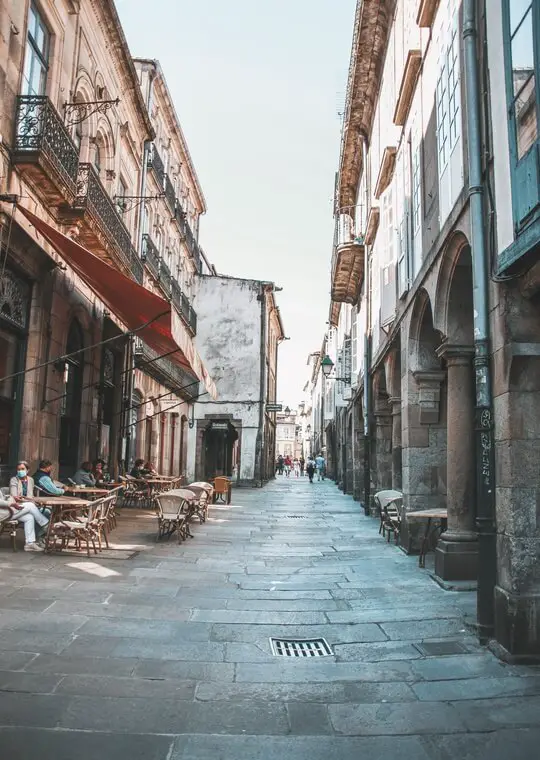
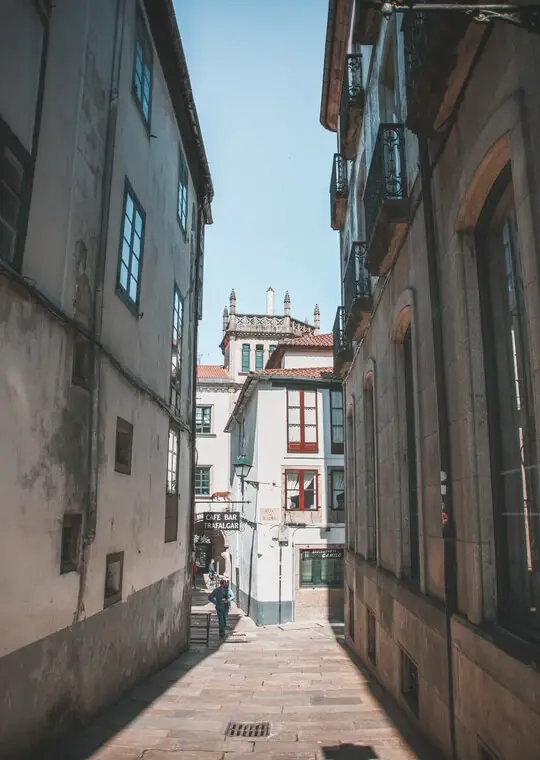
Other of the city’s festivities include:
- Carnival (February/March)
- Pilgrimage of St Lazarus (March/April)
- Holy Week (March/April)
- Ascension Day celebrations
- Saint John (23 June)
- Santiago Festivities (throughout July, but patron saint’s day is 25th July)
- San Roque Festivities (16 August)
- Offering to Santiago during the festivity known as the Translocation (30 December)
Accommodation in Santiago de Compostela
There are several accommodation offers in Santiago de Compostela. I chose to stay at the Hotel Gelmírez. It is a fairly new hotel, located just 10 minutes walk from the historic centre of the city.
The room was spacious and the conditions were excellent for the price I paid (137€ for 3 nights)! A real bargain 😊. I ended up not adding breakfast to my stay, as there are 3 or 4 cafés on the hotel’s street where you can have it much cheaper.
Anyway, I leave you other suggestions of accommodation that seem to be good value for money when I was searching for accommodation:
- Casas Reais Boutique
- Hotel Lux Santiago
- Nest Style Santiago
- Rey Fernando
- Eurostars San Lazaro
- Exe Area Central
- Hotel Montenegro Compostela
💡 EXTRA TIP: If you are travelling by car, when looking for accommodation, bear in mind that some areas of the historic centre are pedestrian-only and it is difficult to find free parking places on the street. Choose hotels with free parking or with lower parking fees.
💼 TRAVEL INSURANCE: Unexpected events happen anywhere in the world, so I always recommend getting travel insurance. I regularly use Heymondo, which offers some of the highest coverages on the market at very competitive prices. As well as covering medical expenses, Heymondo’s insurance also covers the loss or theft of luggage, electronic equipment and more. They also have a 24/7 customer service through their App. As A Ticket to Take Off reader, you get a 5% discount when purchasing Heymondo insurance. The purchase must be made using this link, and the price shown on the website already includes the discount.
Activities & tours in Santiago de Compostela
What to visit in Santiago de Compostela?
Before telling you all about the perfect itinerary in Santiago de Compostela, here is a map with the main points of interest in the city.
» Obradoiro Square
Obradoiro Square is the city’s main square and where we find some of the city’s most emblematic monuments. In this square, you’ll find the Cathedral of Santiago de Compostela, Hostal de los Reyes Católicos, the Raxoi Palace and the building of Colexio de San Xerome.
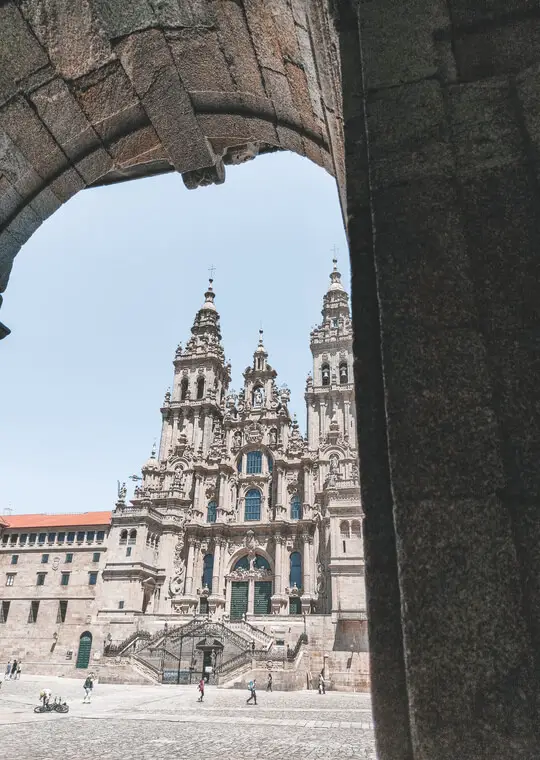
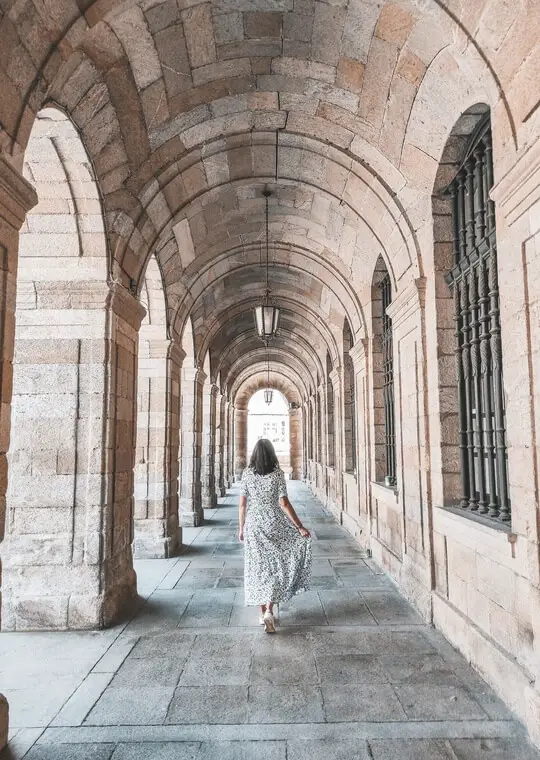
Get ready to spot tens or even hundreds of pilgrims, as this is the final destination of the various versions of Camino de Santiago.
» Santiago de Compostela Cathedral
Santiago’s Cathedral is a mandatory stop in the city. Built between 1075 and 1128, apart from being the final destination for the many pilgrims who walk Camino de Santiago every year, this church is absolutely beautiful.
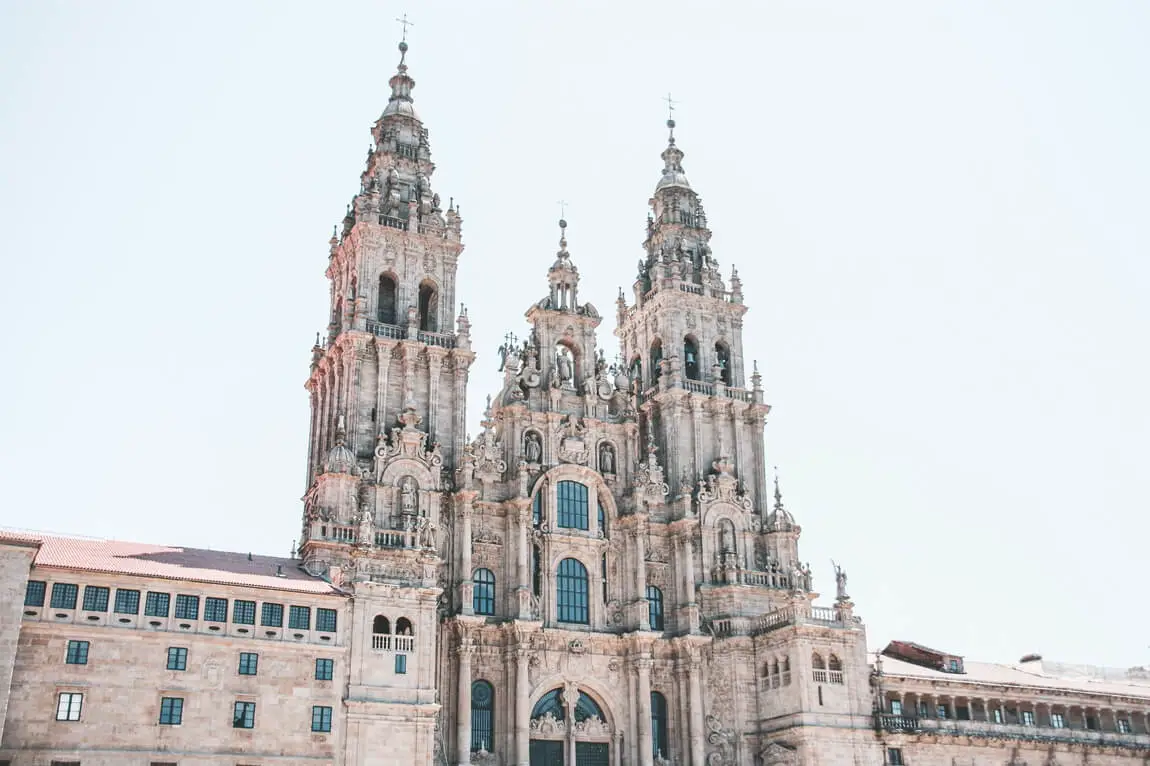
The visit is free and it is here that we can find the tomb of the apostle St. James (Santiago Maior). Enter the cathedral and get surprised by all the details in its interior.


📝 USEFUL INFORMATION: The Cathedral is open every day from 7 am to 9 pm and admission is free. However, you can also visit the Museum, the Gelmírez Palace and Pórtico da Glória (Door of Glory). All information about visiting hours and about booking a visit can be found here.
» Hostal de los Reyes Católicos
Facing the Cathedral of Santiago de Compostela, Hostal de los Reyes Católicos is the building on your left. This served as a hospital for the thousands of pilgrims who needed help at the end of Camino de Santiago. It was built by the Catholic Kings and is now a 5-star hotel. It has even been considered one of the most beautiful hotels in Europe.
» Raxoi Palace
Also located in Obradoiro Square, the Raxoi Palace currently houses Junta de Galicia (Galicia’s government). Neoclassical in style, it was commissioned by Archbishop Raxoi in the 18th century.
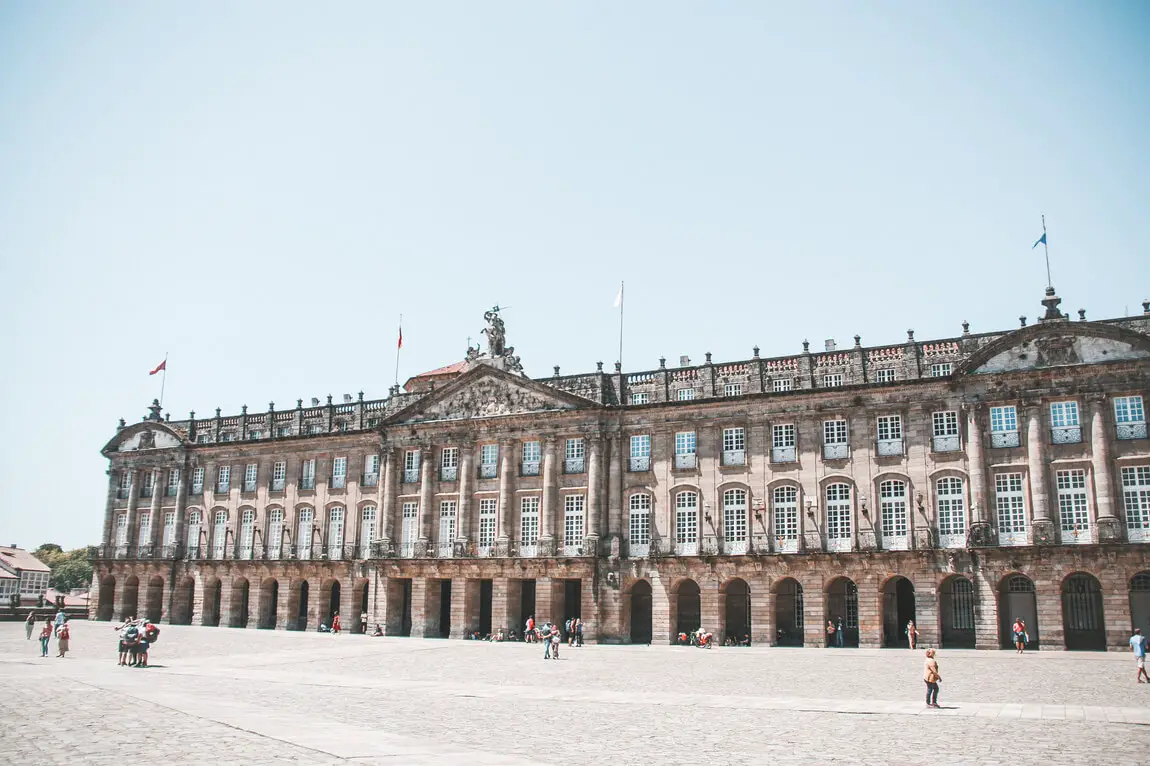
» Praterías Square
Praterías Square is another must-see for those visiting Santiago de Compostela. Its name comes from its historical importance in the jewellery industry.
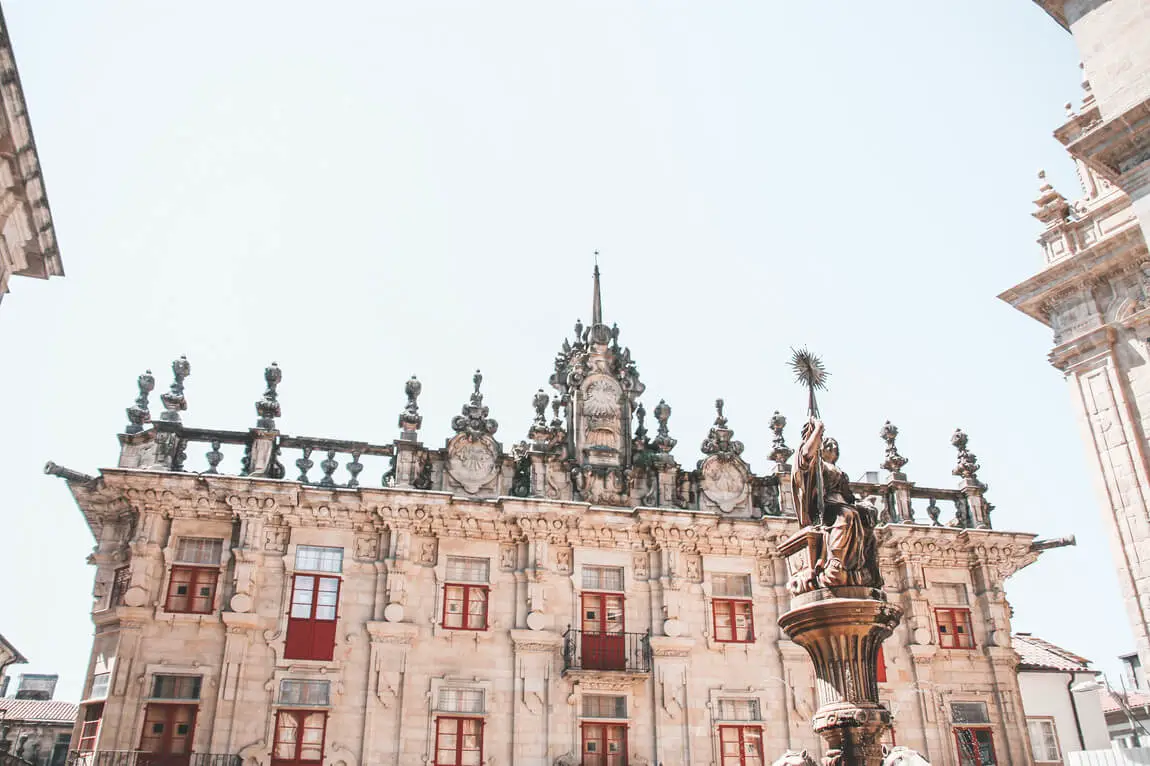
In addition to the privileged view of the bell tower of Santiago Cathedral (also known as Berenguela), we can also find Fonte dos Cavalos (Horses Fountain) in its centre, Casa do Cabido (which only has the purpose of embellishing Praterías Square) and also the Museum of Pilgrimage and Santiago.
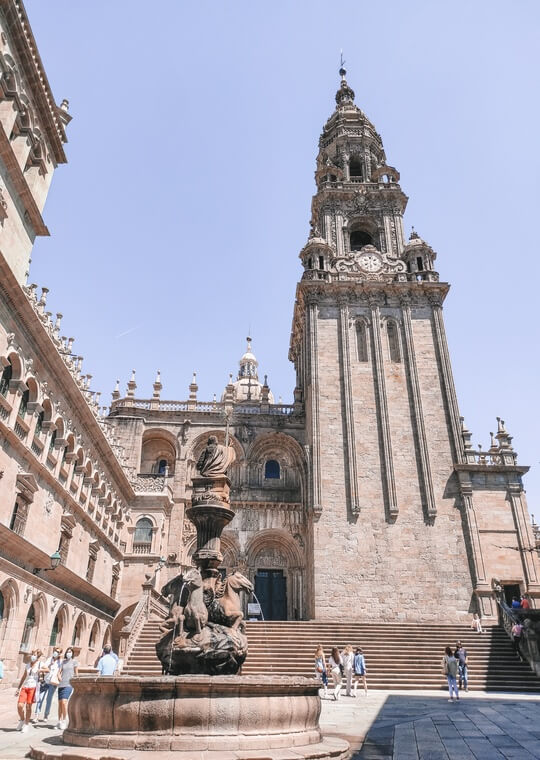

It is also in this square that pilgrims walking Camino de Santiago can receive their pilgrimage certificates at the Pilgrim’s Office.
📝 USEFUL INFORMATION: The Pilgrimage Museum is open Tuesday to Friday from 9.30 am to 8 pm and Saturday from 11 am to 7.30 pm. On Sundays and public holidays, it is open from 10.15 am to 2.45 pm. Admission costs 2,4€, but you can find the most up-to-date information here.
» Quintana Square
Quintana Square is also very close to the imposing Santiago Cathedral. The square is divided into two parts: Quintana dos Mortos (Death’s Quintana), which was used as a cemetery until the late 18th century and Quintana dos Vivos (Alive’s Quintana), at the top.

On the opposite side of Santiago Cathedral, we can find the San Paio de Antealtares Monastery, founded in the 11th century by Alfonso II of Asturias.
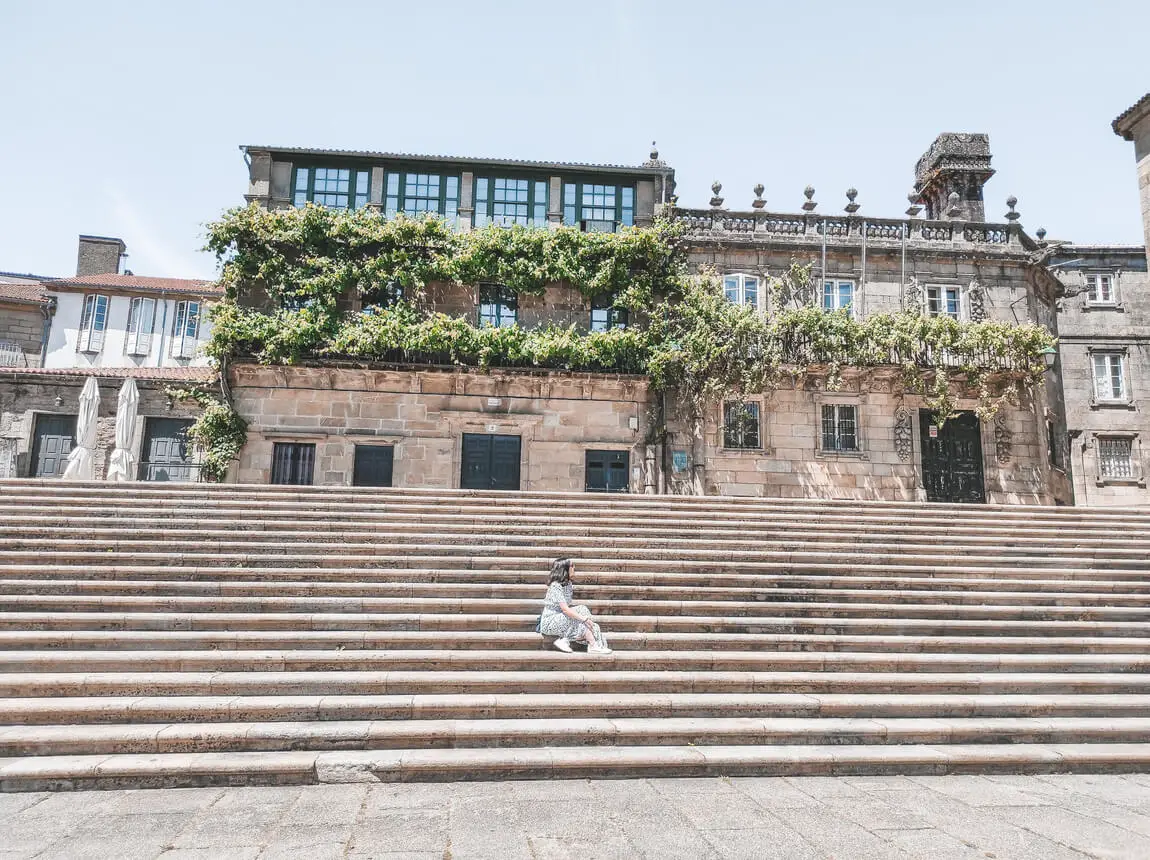
It is also in this square that we find the Cathedral’s Holy Door, which only opens in special circumstances, such as Jubilee Years.
» Fonseca Square
This square may not be on every itinerary of Santiago de Compostela and I discovered it purely by chance, but it is quite a pleasant space where we find some cafés.
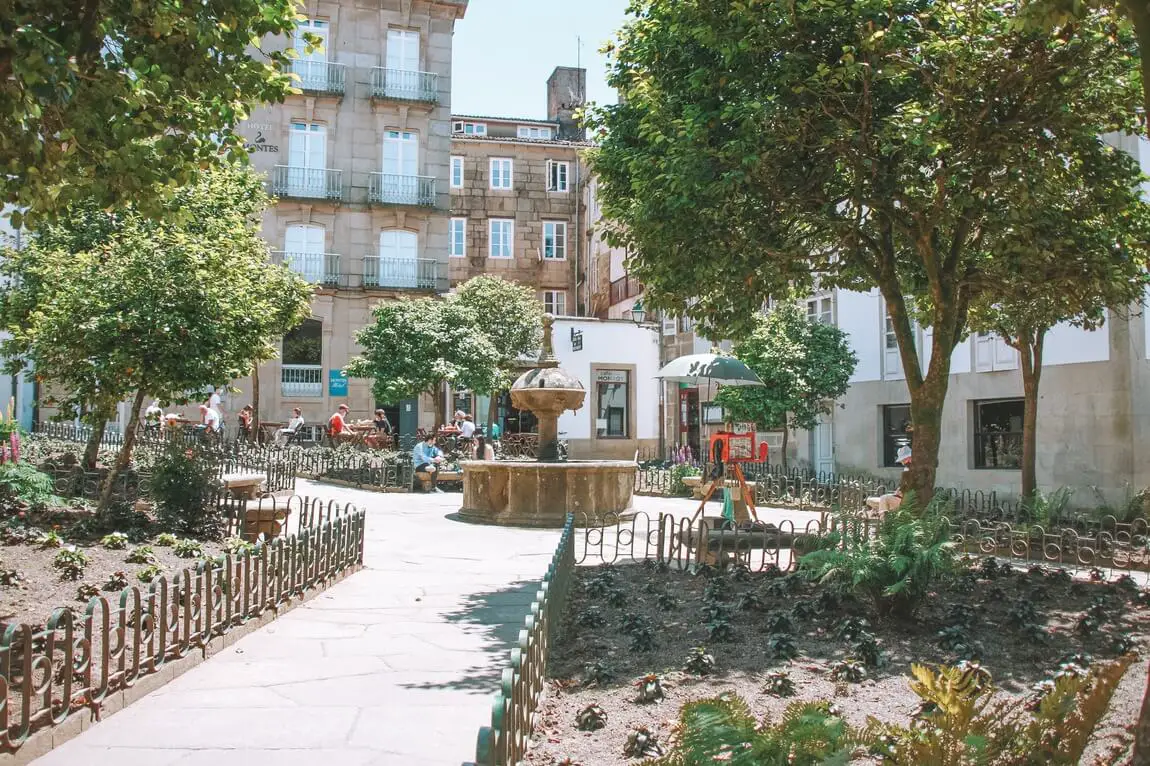
Right opposite the square is Pazo de Fonseca, which currently belongs to the University of Santiago de Compostela.
» San Martiño Pinario Monastery
Located in Immaculada Square, we find San Martiño Pinario Monastery, with a neoclassical, Renaissance and Baroque style. This came to be one of the most important monasteries in Galicia in the 15th century.
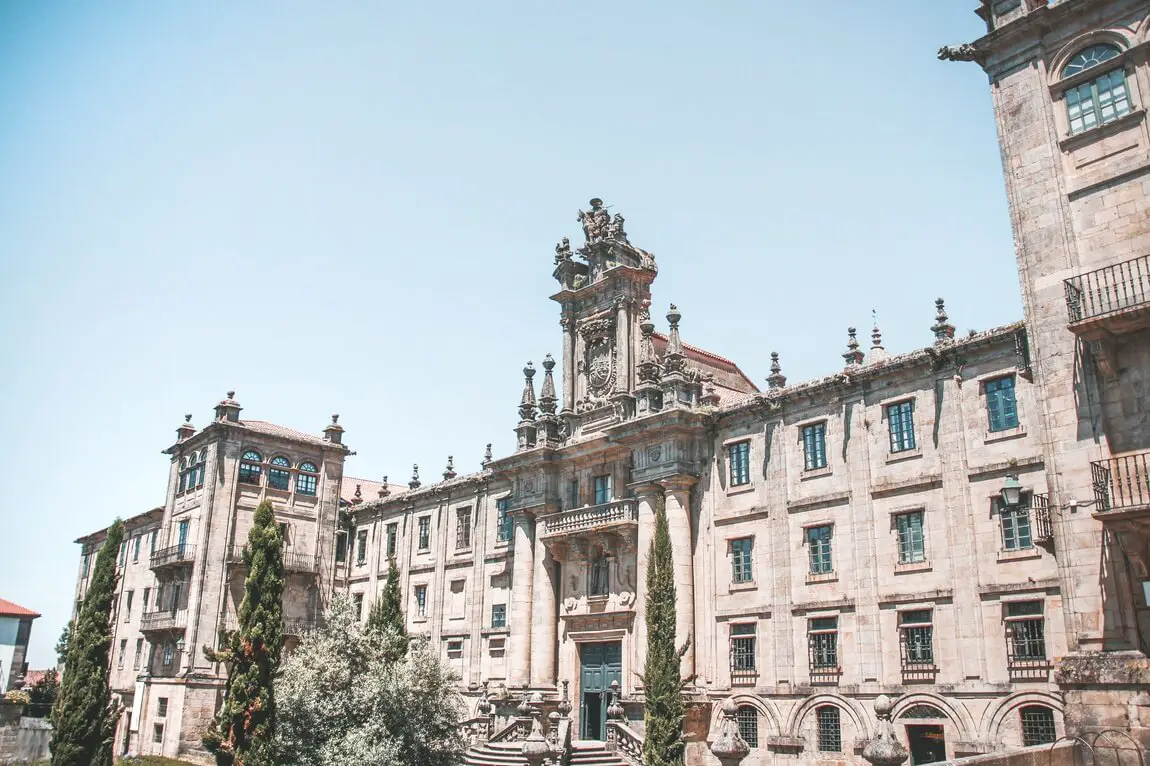
Currently, some faculties of the University of Santiago de Compostela, the city’s Theological Institute, as well as the city’s Diocesan Historical Archive can be found in this building.
📝 USEFUL INFORMATION: The Monastery is open Wednesday to Monday from 11 am to 2 pm and 3.30 pm to 7 pm. Find all the latest information here.
» Franco Street
Franco Street is one of the liveliest streets in Santiago de Compostela and has many great places for you to eat. This is a historic street, whose name comes from the term “francos” used to designate free men from across the Pyrenees.
» Santa Maria Salomé Church and Nova Street
Built in the 12th century, the Church of Santa Maria Salomé is another church to visit in Santiago de Compostela, this time dedicated to the mother of the apostle St. James. This church is located in one of the most famous streets of the city – Nova Street. On this street, besides the Church of Santa Maria Salomé, we can also find:
- Santiago’s Main Theatre
- Galician Drama Centre
- Santa Cruz Palace
- Casa das Pombas
- Vetusta Bookstore
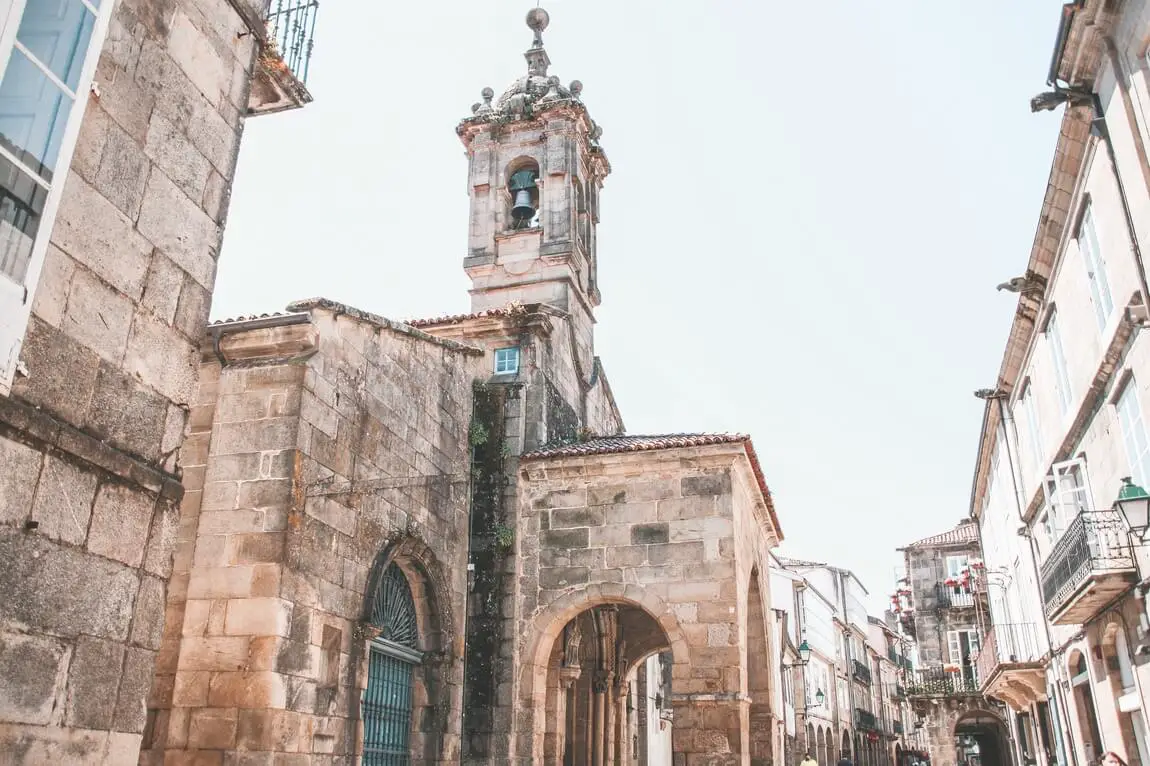
» Villar Street and Toural Square
An itinerary through the city of Santiago de Compostela should also include a visit to Villar Street, one of the city’s main streets. The best thing one can do is to wander around this street while window-shopping in the local shops.
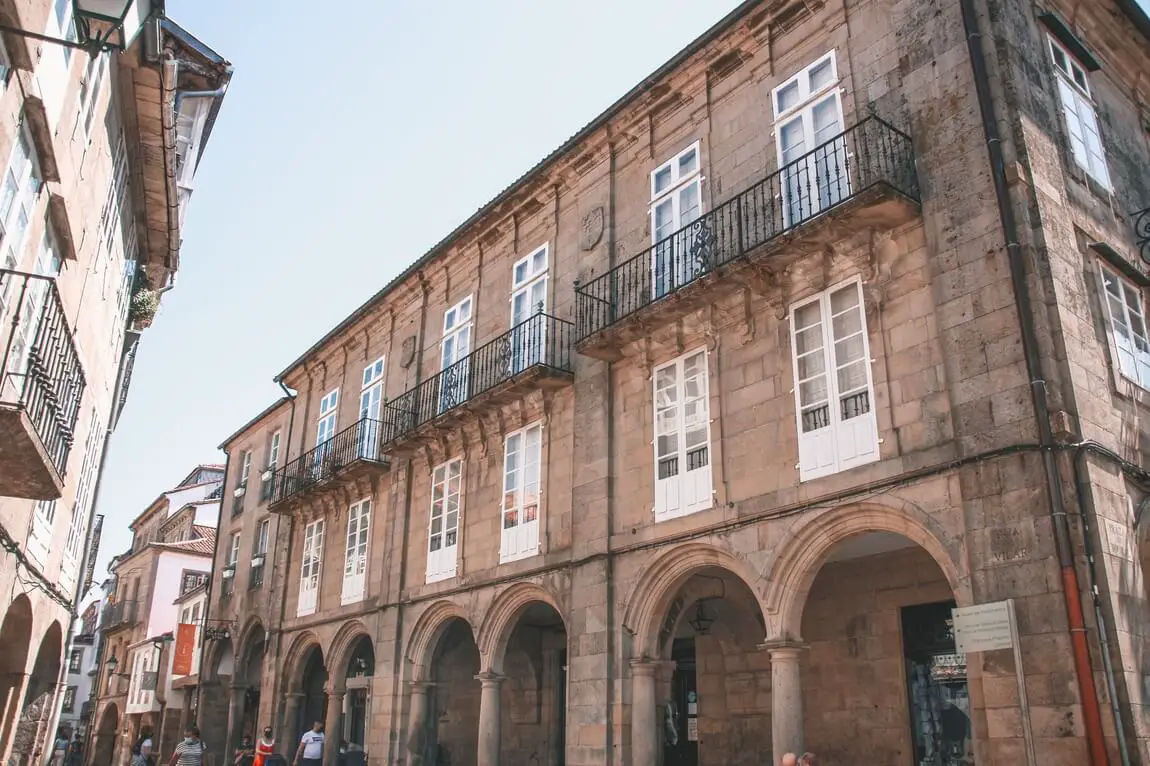
At the end of this street, we can also find Toural Square, surrounded by buildings of baroque architecture. In one of these buildings, you can find the Grannel Museum and also the Bescansa House.
» Mazarelos Arch and Convent of Madres Mercedarias
The Mazarelos Arch is the only arch still standing of the old medieval city wall. Take the opportunity to cross it and, on the other side, you will find the Convent of Madres Mercedarias.

» Abastos Market
Because a visit to Santiago de Compostela is not only about religious monuments, another essential stop is the Abastos Market.
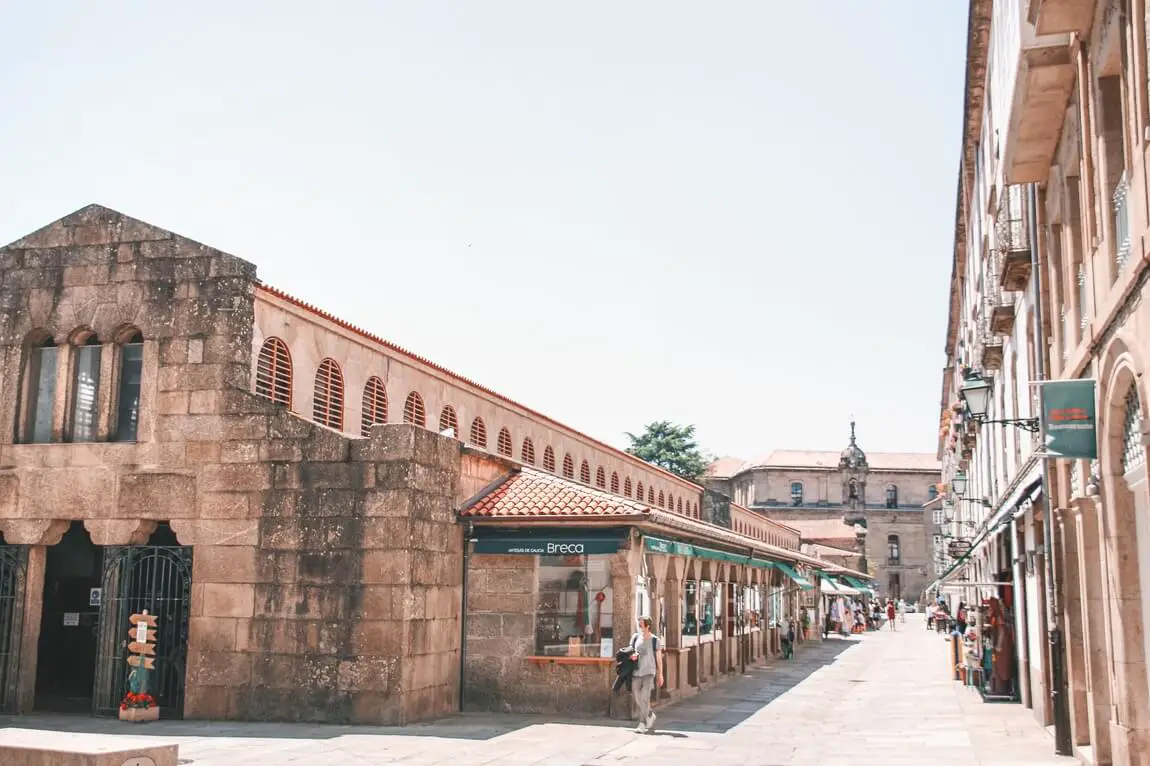
The market opened in 1873 and it is clearly a prime place sought after by locals to buy fresh produce.
📝 USEFUL INFORMATION: The market is open Monday to Saturday from 8 am to 2 pm.
» San Agustín Church
Passing the Abastos Market, a few metres further on we find San Agustín Church. With a neoclassical and baroque style, the space is currently occupied by the Jesuit university college.
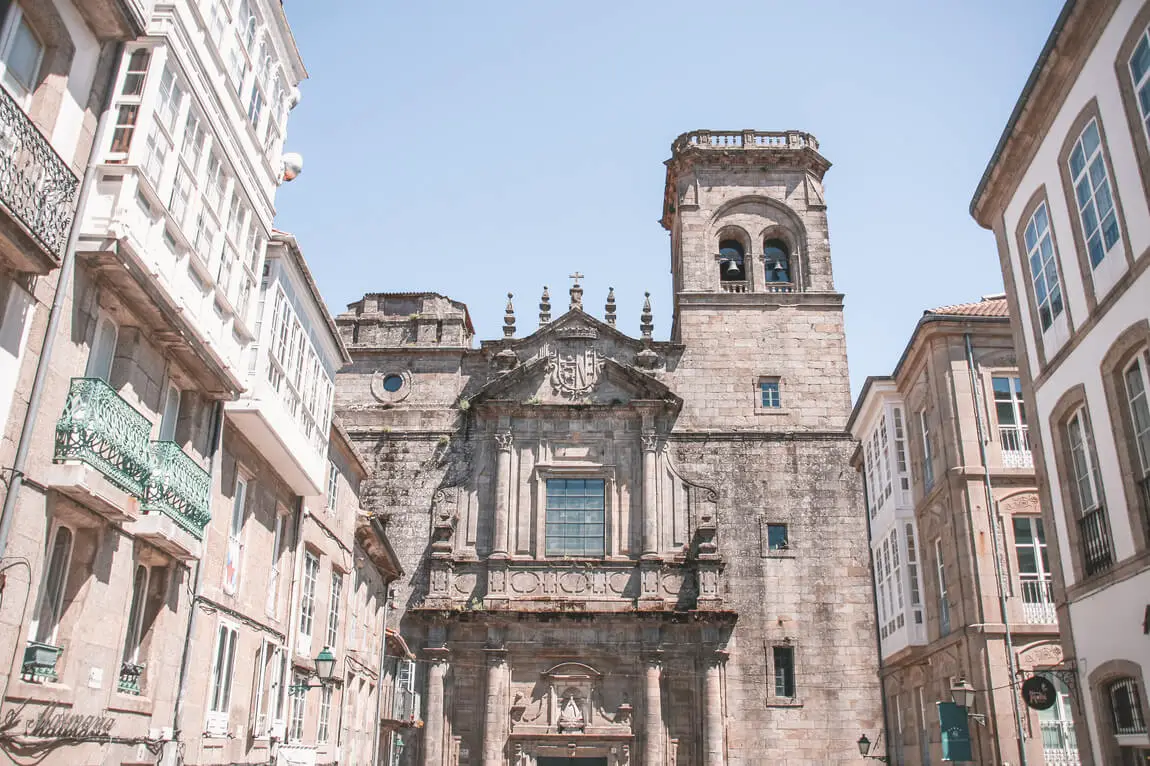
» Cervantes Square
Don’t forget to visit Cervantes Square, a small square where people gather on non-rainy days 🤞.
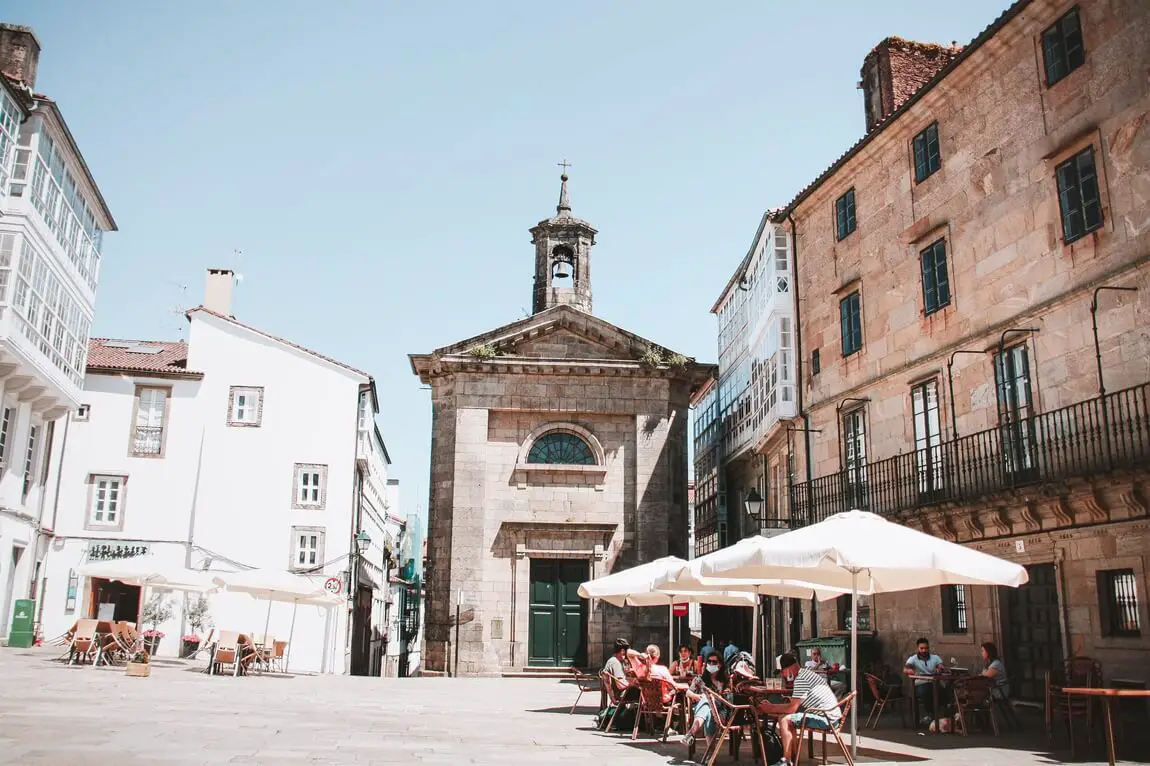
In this square, the church of San Bieito and two baroque palaces stand out.
» Santa María do Camiño Church
With its neoclassical style dominating, Santa María do Camiño Church was built in the 13th century. Next to this church, we also find Porta do Camino (Camino de Santiago’s Door), which marks the entrance to the city for pilgrims walking the French version of Camino de Santiago.
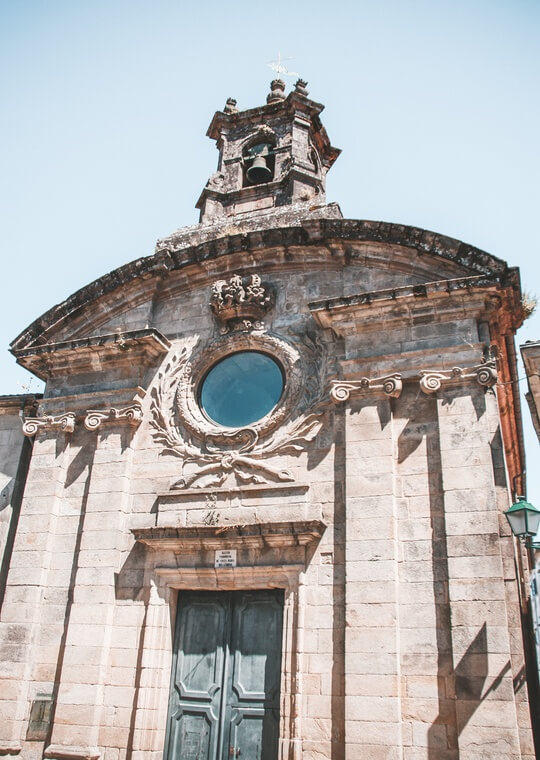
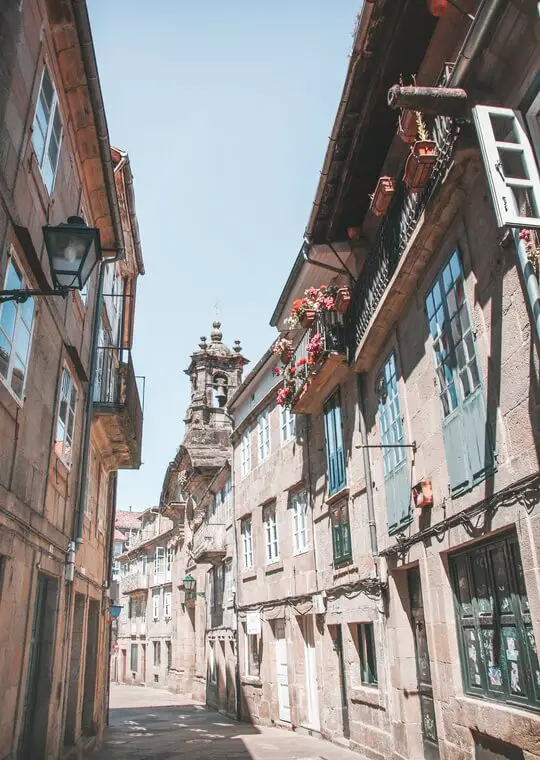
» Convent of San Domingos de Bonaval
Built in the 13th century, the building of the former Convent of San Domingos de Bonaval is currently occupied by the Museum of the Galician People.
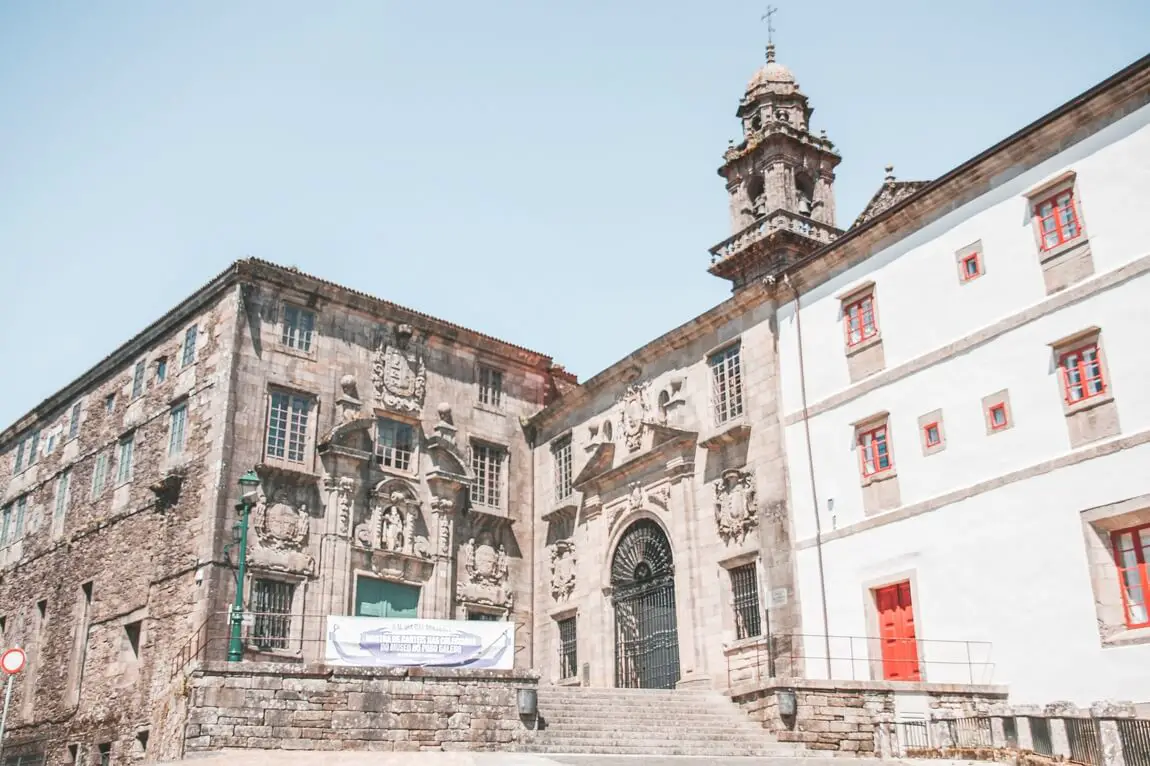
📝 USEFUL INFORMATION: Admission to the museum costs 4€, but it can be visited free of charge on specific days (18 May, 25 July and 29 October). You can find all the information here.
» Alameda Park
Alameda Park is one of the most important green spaces in Santiago de Compostela and also one of the places I liked the most during my visit to the city.
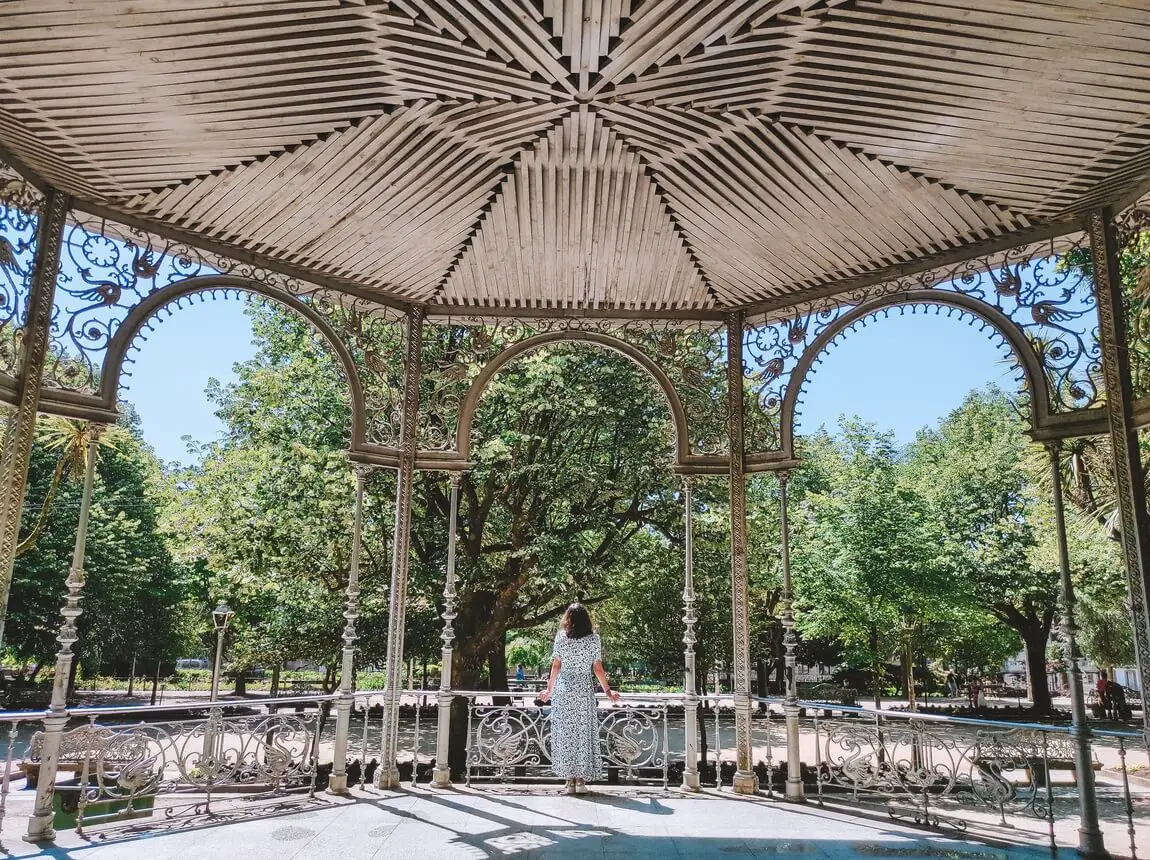
Apart from the funny statue of As Dúas Marías at the park’s entrance (for those coming from the historic centre), the Santa Susana Church and the Pilar Chapel, the best way to enjoy this place is to just walk around.
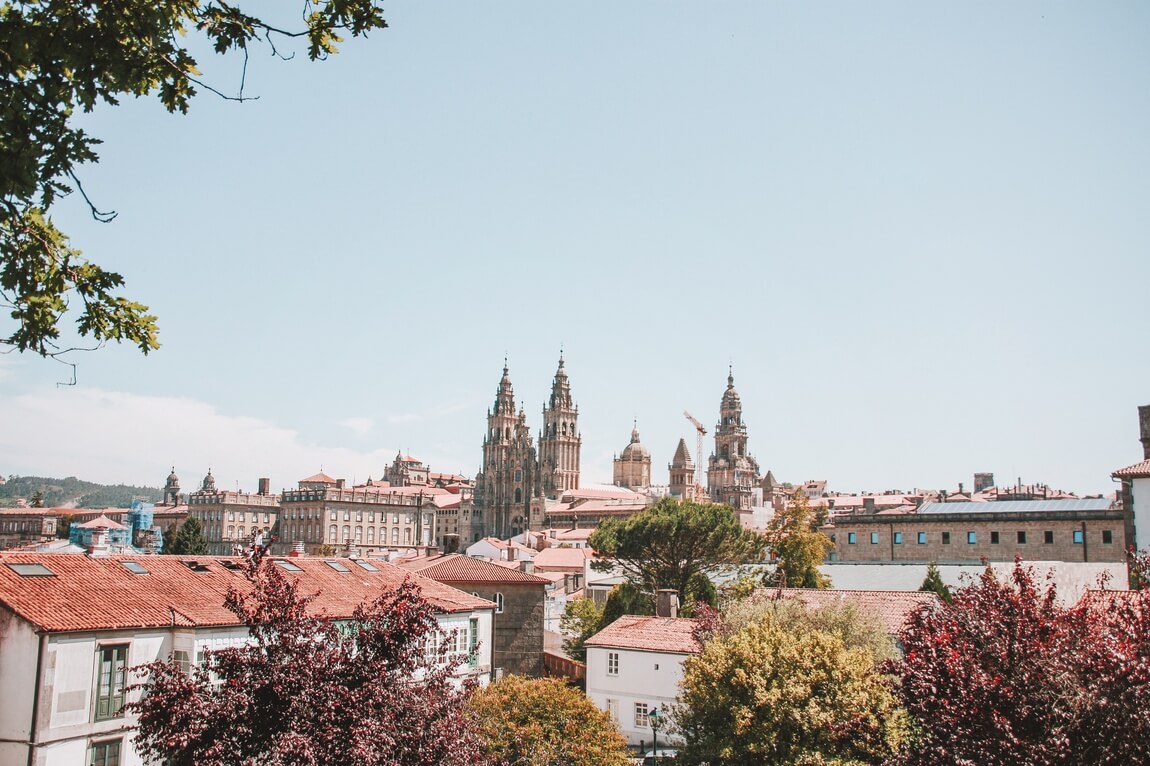
And the best part? The wonderful views over the historic centre in the background and especially of Santiago Cathedral 🥰
💡 Tips for walking Camino de Santiago: In case you are interested in walking Camino de Santiago, as I don’t know any of the routes myself, I leave you here one of the best guides of the various versions of Camino de Santiago.
Restaurants in Santiago de Compostela
During my time in Santiago de Compostela, I had the opportunity to try two restaurants that I loved:
- A Noiesa (€€): Located right in the city centre, this is a tasty tapas restaurant. The space is pretty nice and the owner is really friendly. I recommend booking in advance as it is one of the most popular restaurants in the city.
- Méson 42 (€€): also quite centrally located, I tasted a divine paella here. However, although the portion is supposed to be for 2 people, it could perfectly feed 3 people 😉.
Disclaimer: this post may contain some affiliate links, which means I get a small commission if you buy something through my links. This doesn’t represent any additional cost to you and you’ll be supporting my work here on the blog😊







Thank you so much for your detailed itinerary. I look forward to visiting in June 2025. How do you suggest to travel between Santiago and Madrid? (via Car…?)
Hey Betty,
Thank you so much for your positive feedback 🙂 I hope you enjoy Santiago. Regarding in how to get from there to Madrid, driving is definitely a good idea but you can also check out the RENFE trains.
Happy travels,
Mariana